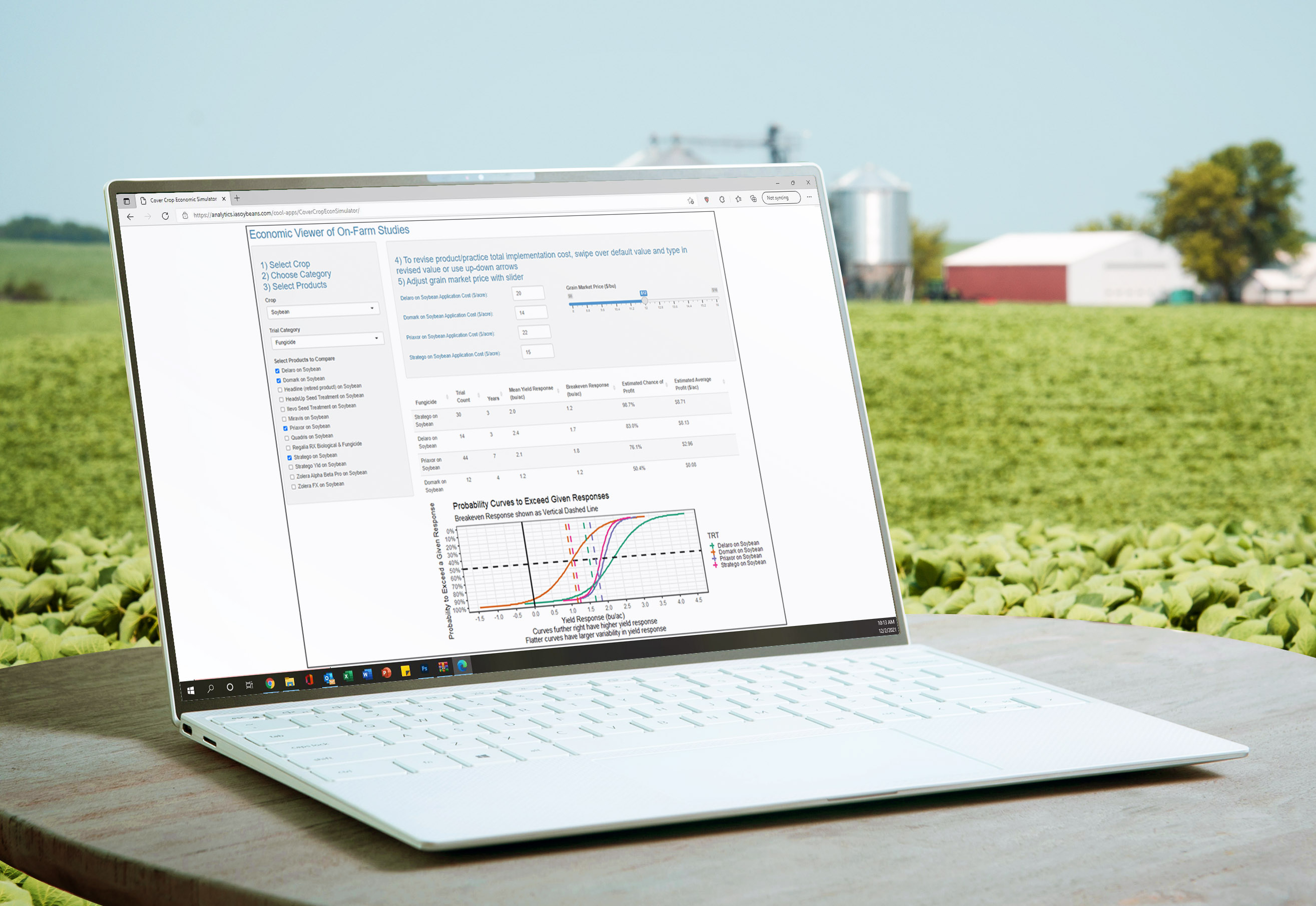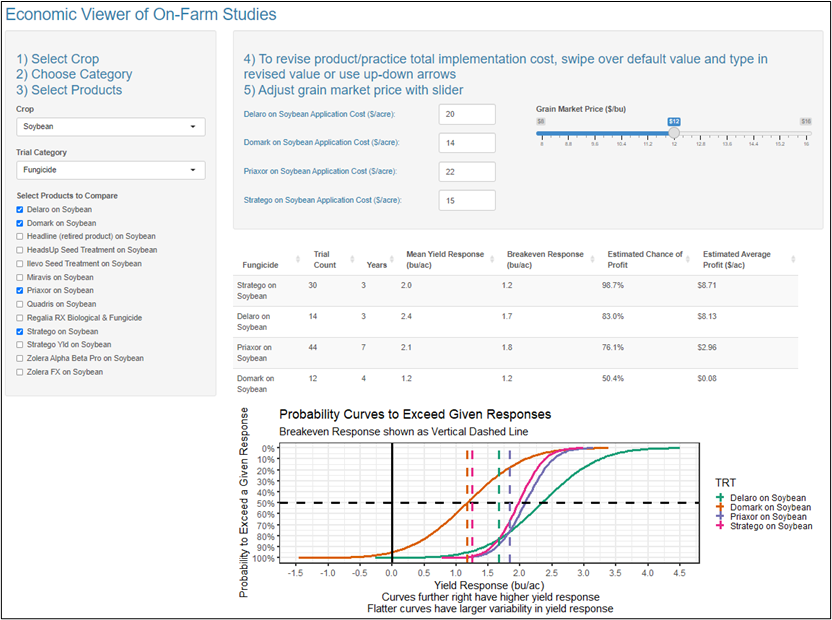
Iowa Soybean Association's Research Center for Farming Innovation's analytics team has developed a new tool to help farmers and agronomists make sound economical decisions. (Photo/Iowa Soybean Association).
New decision-aid tool helps farmers make economic assessments
April 14, 2022 | Kriss Nelson
With rising input costs, farmers have been fervently working on calculating their expenses to achieve a profitable return on investment.
To assist producers and agronomists with this, the Iowa Soybean Association’s (ISA) Research Center for Farming Innovation (RCFI) analytics team has developed a new online decision-aid tool.
The Economic Viewer of On-Farm Studies, or EVOS, enables simplified, interactive, economic comparisons using 16 years of unbiased research results from on-farm studies conducted by farmers using their equipment in real-life conditions across the state.
“Farmers need dynamic tools that help objectively identify how individual input or practice choices produce a yield response and, more importantly, how the yield response will impact their bottom line,” says Peter Kyveryga, ISA senior research scientist of analytics. “Essentially, farmers want to know if any gain in yield will offset the cost to implement an input or practice change.”
Putting EVOS to work
To begin using the tool, select a crop, either corn or soybean, and a study category on the EVOS tool webpage.
Study categories include fungicides, fertilizers, insecticides, tillage and more. EVOS allows users to calculate and compare the probable economic outcomes of various products and practices under user-defined input cost and crop market price scenarios.
For example, users can compare up to 10 different fungicide studies on soybeans that have an average of 18 trials each, conducted over three years. There are nine study categories (nutrients, crop management, biological, plant protection, new technologies, etc.) for each crop.
Next, modify economic conditions for input implementation cost per acre and crop market price per bushel. EVOS provides the rest.
Users can edit input application costs to produce outcomes based on local rates rather than the default estimates provided in the tool.
“The tool shows how much of a yield response is required for each product to pay for itself and the chance it will pay when soybeans are at the user-selected price between $8 and $16 per bushel,” says Kyveryga.
Results are then displayed as a table and in a graphic format.
Users can click the ‘study information’ tab to find links to previous trials and research results from ISA RCFI’s flagship application, ISOFAST. These PDFs contain trial location, weather information and more.

The figure above shows the EVOS application comparison of four soybean fungicide products at soybean grain market price at $12/bu. The slider allows users to raise or lower the grain market price. Default product application costs can be edited by swiping over them and typing in revised values.
EVOS was created with assistance from ISA agronomists to help make the tool practical for farmers. Kyveryga encourages farmers to contact the Iowa Soybean Association with questions about the tool, ideas and suggestions on existing tools. Have an idea for a tool or a solution that doesn’t exist? Kyveryga wants to hear your suggestions.
“We are excited for the release of EVOS because it compacts years of objective, farmer-led research into an easy-to-use decision-aid tool for farmers that is designed to accommodate volatility in production costs and market prices,” says Kyveryga.
The tool was developed as a result of joint project with the Iowa State University Department of Agronomy and funded by USDA grant “Web-Based Dynamic Data-Analytics Framework for On-Farm Research Networks”.
Back